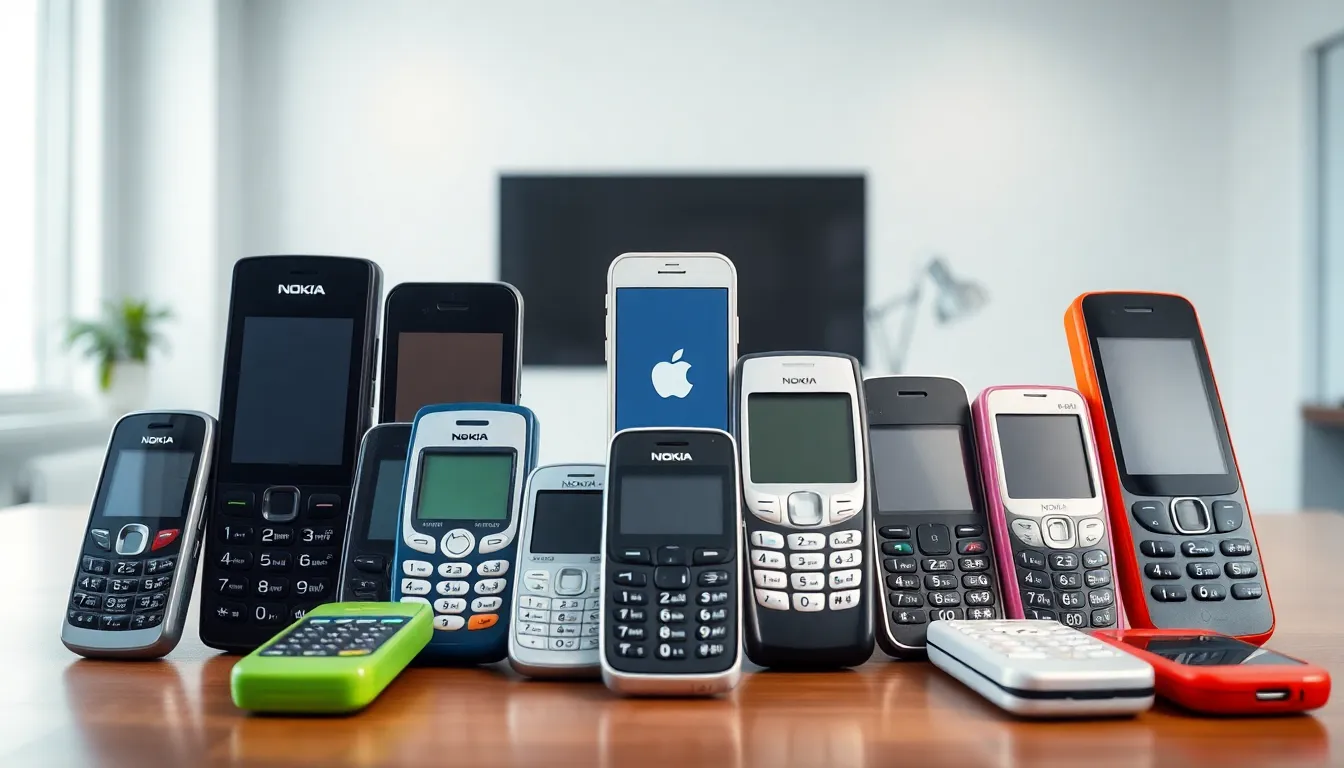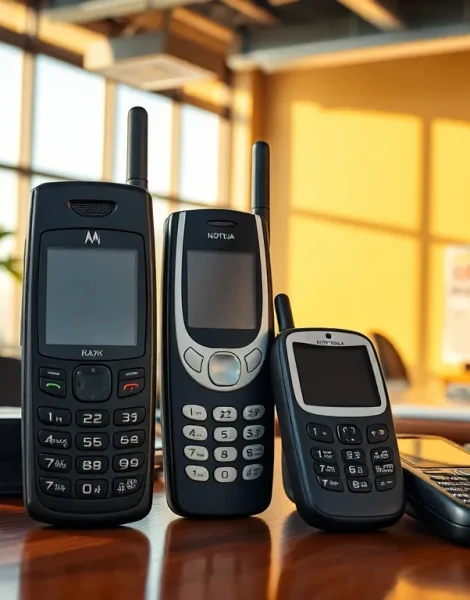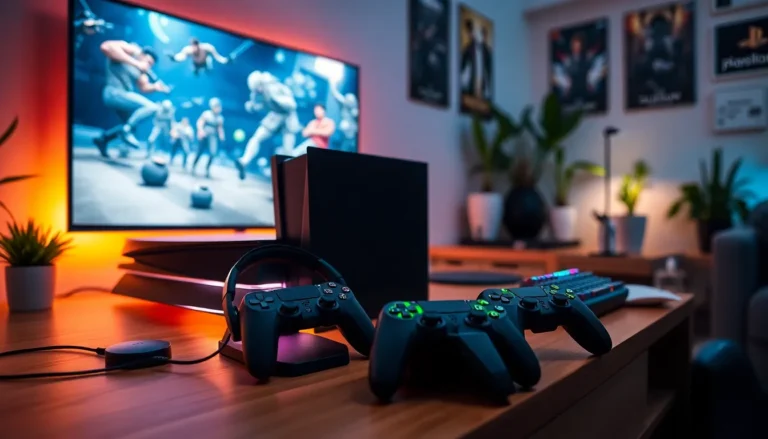Remember the days when phones were more than just smart? The 2000s was a transformative era for mobile technology, with contraptions that were as much about style as they were about function. With a dash of nostalgia and a sprinkle of humor, let’s jump into the fascinating journey of phones in the 2000s, where flip models reigned supreme and texting was an art form.
Table of Contents
ToggleThe Evolution Of Mobile Technology

The 2000s saw a remarkable evolution in mobile technology that would set the stage for the devices we use today. This decade marked the rise of feature phones, which were the stars of the early millennium. These slick, compact gadgets came equipped with physical keypads, vibrant displays, and, wait for it, color screens.
The Rise Of Feature Phones
Feature phones dominated the early part of the decade. They catered perfectly to users seeking simplicity and essential functionalities, evolving from their bulkier predecessors. Think about it: texts, calls, and even a few rudimentary games like Snake were all it took to keep users entertained. As cellular networks upgraded, a new wave of features emerged: polyphonic ringtones, which made folks feel like they were living in a tech utopia. With brands like Nokia leading the charge, these durable phones made an indelible mark. You’d be hard-pressed to find someone who didn’t ogle at that iconic Nokia brick.
The Introduction Of Smartphones
As the decade unfolded, the introduction of smartphones forever changed the landscape. Apple’s iPhone, released in 2007, was a game-changer. With a touch screen that was a revelation, it began the craze for mobile apps and transformed phones into everything from cameras to portable gaming consoles. Other manufacturers scrambled to catch up, launching their takes on the smartphone model, but nothing quite matched the allure of the iPhone. This era painted a clear picture of just how fast technology could advance in a short span, shifting from basic functionality to full-fledged mini-computers in palms.
Key Features Of 2000s Phones
The phones of the 2000s were brimming with unique features, each one a precursor to the capabilities we take for granted today.
Camera Technology
It’s hard to forget that the first camera phones made their debut in this decade, allowing users to snap pics on the go. Initially, images were grievously pixelated and only served as a memory aid at best. Still, as technology improved, those early 1-megapixel cameras paved the way for the high-resolution cameras we enjoy now. Suddenly, documenting life became just as easy as receiving a call. The camera revolution didn’t stop there: it encouraged social sharing, laying the groundwork for the Instagram phenomenon that would emerge in the 2010s.
Text Messaging And Instant Messaging
Text messaging transformed communication during the 2000s. With character limits designed to mirror the old-school SMS style, brevity was key. Those pinky workouts on tiny keyboards became a competitive sport, leading to abbreviations that are still in use today. Meanwhile, instant messaging apps like AIM and later BBM (Blackberry Messenger) merged with cellular functionalities, creating a new language of communication. It was all about connection, fast, furious, and often riddled with typos.
Battery Life And Durability
One of the standout aspects of 2000s phones was their battery life and impressive durability. While today, users might find themselves charging their devices multiple times a day, phones like the Motorola Razr boasted battery lives that lasted days on a single charge. This attribute was crucial at a time when long conversations and games of Snake were common.
Durability? Let’s talk about it for a second. Those nifty little bricks could withstand some serious drops. The infamous Nokia 3310 was practically indestructible. Toss it, drop it, run it over with a truck: it just kept on ticking. Reality check: this era produced phones that were built to last, not like the fragile touchscreens we handle now.
Cultural Impact Of Phones In The 2000s
The influence of phones in the 2000s transcended mere technology: they reshaped social norms and behaviors across the globe.
The Role Of Phones In Socializing
Mobile phones changed how people interacted. Gone were the days of being tethered to a landline. Instead, individuals could stay connected on-the-go, allowing for spontaneous meetups and late-night texts. Teenagers developed new social hierarchies based on who had the coolest phone or the latest ringtone. Social circles expanded beyond school walls, leading to a connectedness that influenced everything from relationships to reputation.
Impact On Business And Productivity
On a more serious note, the business landscape transformed dramatically as phones became essential productivity tools. Emails and business calls could happen anywhere, making the line between home and work increasingly blurred. The advent of Blackberry devices allowed professionals to juggle emails, schedules, and contacts effortlessly. It’s fascinating to reflect on how this laid the groundwork for the always-on culture that many experience today. The device that once made socializing easier also helped to reshape the entire corporate world.









